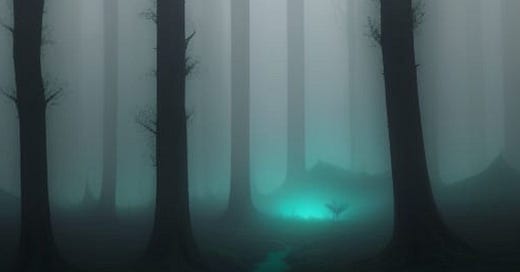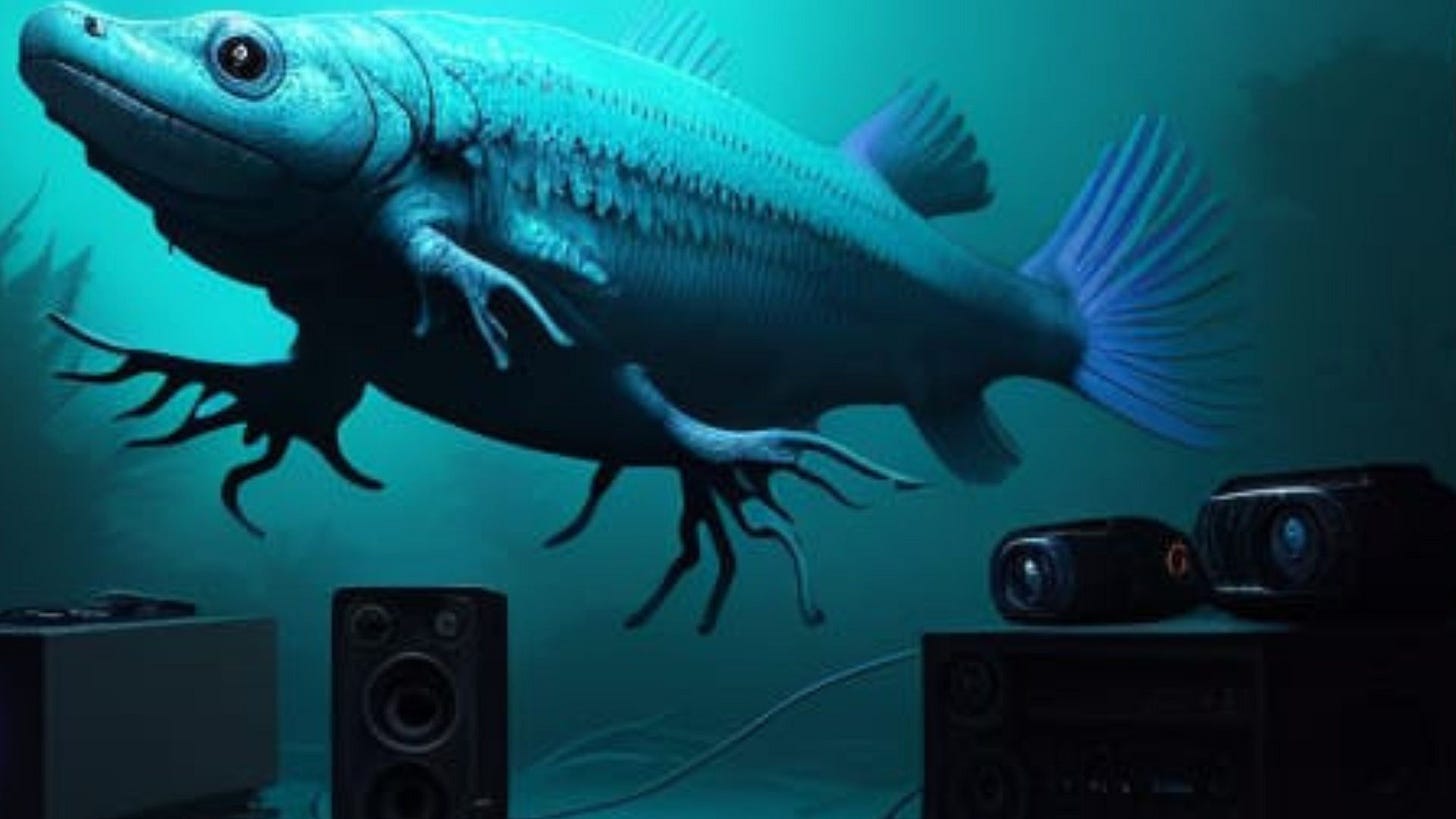Ambient and drone music represent two of the most interesting trajectories in experimental — and maybe controversial too.
While they share overlapping aesthetics, each emerges from distinct historical and theoretical foundations, challenging conventional musical structures and our perception of time. From Brian Eno’s groundbreaking conceptualization of ambient music to the sustained sonic meditations of drone pioneers like La Monte Young and Éliane Radigue, these genres continue to evolve.
Contemporary artists expand on these traditions by developing new methodologies for deep listening and temporal exploration. There’s also an argument that, because ambient particularly has permeated popular culture, it’s no longer experimental.
The Foundations of Ambient Music
Ambient music, as a formalized genre, was shaped in the 1970s by Brian Eno. His 1978 album Music for Airports is often cited as a defining moment, introducing the idea that music could be both immersive and ignorable—a radical departure from Western classical and popular traditions.
Key Philosophical Influences:
Erik Satie’s "Furniture Music" – Compositions designed to blend into an environment rather than demand active listening.
Minimalism and Process Music – The idea that repetition and subtle variation could shape an evolving sonic experience.
By emphasizing atmosphere over structure, Eno redefined music’s functional role in lived experience, inspiring countless artists to explore the genre’s limitless possibilities.
Drone Music: The Art of Sustained Sound
While often intersecting with ambient music, drone music has its own rich lineage, rooted in traditions that emphasize sustained tones and deep listening.
Historical Foundations:
Indian Classical Music – The tanpura produces continuous harmonic drones, creating a meditative foundation for improvisation.
La Monte Young and The Theatre of Eternal Music (1960s) – Minimalist compositions based on long-duration tones, exploring the physiological effects of sustained sound.
The Velvet Underground – Pioneering textural noise elements that influenced subsequent experimental musicians.
Pauline Oliveros coined the term "deep listening" to describe the immersive and meditative qualities of drone music. Her work, alongside that of Éliane Radigue and other pioneers, established drone as a genre that transforms time perception through sustained sonic environments.
Pioneering Figures in Contemporary Drone and Ambient Music
Recent discussions on these genres highlight several key artists who continue to expand their sonic landscapes.
William Basinski – His work, particularly The River I, explores the aesthetics of decay and deterioration through tape loops. His approach connects historical avant-garde techniques with contemporary digital aesthetics, demonstrating how the passage of time can be an integral compositional element.
Sarah Davachi – Representing a sophisticated approach to drone composition, Davachi’s The Head as Form'd... blends early music influences with minimalist textures, showcasing the genre’s depth in harmonic exploration.
Éliane Radigue – Often considered a bridge between early electronic avant-garde and contemporary drone music, her Feedback Works 1969-1970 laid the groundwork for using sustained tones and analog synthesizers as central compositional tools.
Tim Hecker – Often associated with "maximal" ambient music, Hecker’s dense, layered soundscapes challenge traditional minimalism. His works prove that ambient music can be immersive without being understated.
Ben Seretan – My Life’s Work, a 24-hour drone composition that expands on the genre’s concern with extended duration. This piece aligns with durational works like John Cage’s ORGAN²/ASLSP and La Monte Young’s Dream House installations, pushing the boundaries of listening as an endurance-based practice.
The Role of Traditional Instruments in Modern Drone Music
While early drone music often relied on synthesizers and electronic processing, contemporary artists are increasingly incorporating traditional instruments into their compositions.
Kali Malone – Her use of the pipe organ brings a haunting, meditative quality to drone compositions, blending ancient timbres with modern experimental aesthetics.
Stars of the Lid – This duo redefines ambient music’s emotional depth, using orchestral instrumentation and expansive textures to create deeply immersive experiences.
These approaches illustrate how traditional instruments can be recontextualized within drone and ambient frameworks, adding new dimensions to the genres.
Deep Listening and the Future of Sonic Exploration
As both ambient and drone music continue to evolve, they maintain their experimental edge while adapting to new sonic possibilities. Some developments:
Extended Duration Works – Exploring the impact of ultra-long compositions on human perception.
Hybrid Acoustic-Electronic Approaches – Blending classical instrumentation with digital processing.
Algorithmic and AI-Generated Compositions – The potential for machine-assisted ambient and drone music creation.
The genres remain vital spaces for exploring music’s role in human consciousness, demonstrating how sound can shape not only emotional landscapes but also our perception of time itself.
Ambient and drone music challenge conventional musical frameworks, offering new ways to experience sound. From Eno’s conceptualization of atmospheric composition to the meditative drones of Young and Malone, these genres continue to redefine deep listening..
FAQ + TLDR
What is the main difference between ambient and drone music?
Ambient music focuses on atmosphere and spatial presence, while drone music emphasizes sustained tones and deep listening experiences.
Who are some key figures in ambient music?
Brian Eno, Tim Hecker, and Stars of the Lid are among the most influential figures in ambient music.
How does drone music affect time perception?
By sustaining tones for long durations, drone music alters the listener’s perception of time, creating immersive, meditative experiences.
Why is William Basinski’s work significant?
Basinski’s use of tape loops and decay processes transforms sound into a reflection on memory, loss, and the passage of time.
What role do traditional instruments play in modern drone music?
Artists like Kali Malone and Stars of the Lid incorporate classical instruments like the pipe organ and strings, expanding the genre’s sonic palette.
How do contemporary artists push the boundaries of these genres?
Through extended duration compositions, hybrid acoustic-electronic techniques, and AI-generated music, modern artists continue to evolve ambient and drone music.
Found Sound
Warden-against is a new release by the artist ab9st8. The noisy walls of sound, the artist says, are balanced out with silence and other sounds.
The new experimental piece, posted on Reddit, was talks the performer’s son's death in utero. “It’s a mixture of my voice (in French), a poem I wrote, a synthetic voice, echo and reverb effects. I tried to transcribe this impossible moment: panic, confusion, cold, forgetfulness, dissolution of the bond.”
The artist aBurner says this recording examines topics of sports as a sublimation of violence.
The musician penny anne says compositions are created on on instruments fabricated from scrap wood and speaker parts. The result is a noisy, folky EP out now.
Also on Reddit, “No DAW, no samples, no manual input—just a patch running on its own, shifting between chaos and order. Each and every sound is synthesized within VCV Rack in real-time.“







Thanks for sharing. Stoked to check out Penny Anne.